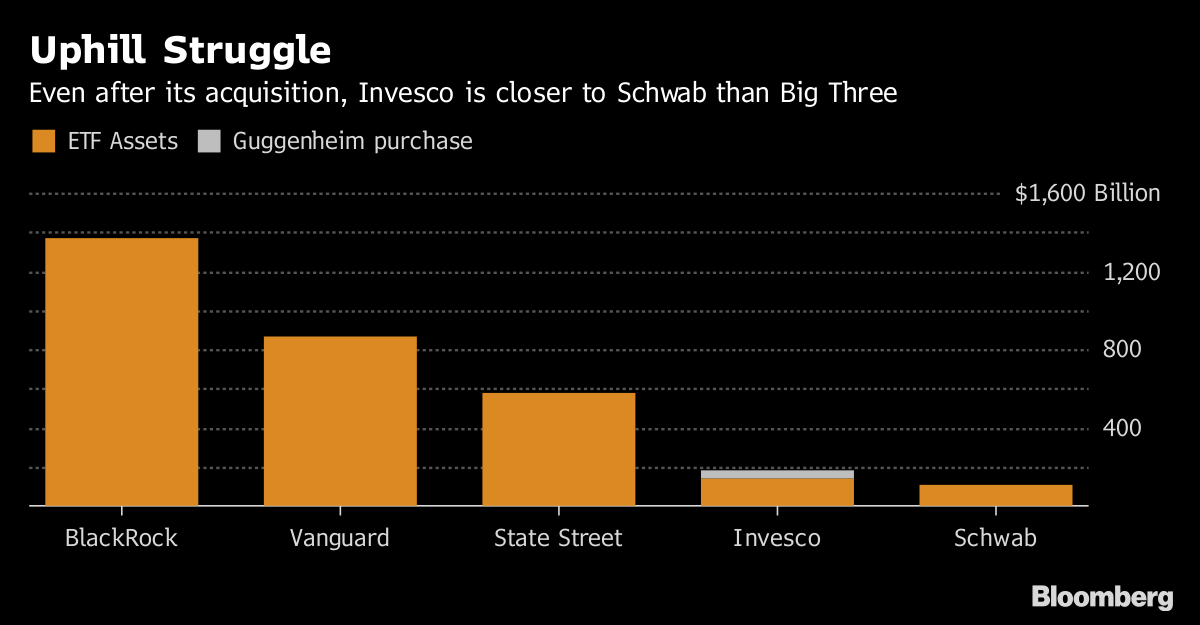Invesco Ltd. is playing aggressive defense as it shores up its spot among the largest U.S. issuers of exchange-traded funds.
The asset manager completed its acquisition of Guggenheim Investments’ $39 billion ETFs, it announced Monday, and already it’s slashing fees on some of those funds as it looks to lure new assets. It’s a savvy move for the Atlanta-based firm, which is in a state of limbo within the industry as it battles to protect its market share from smaller rivals while seeking to join the industry’s leaders.
With its American business growing 28 percent with the purchase, Invesco has solidified its position as the fourth-largest ETF issuer in the U.S. with $177 billion in assets. That’s a substantial sum and roughly $70 billion more than its next closest competitor, Charles Schwab Corp.
But it’s still miles away from the Big Three of ETFs -- BlackRock Inc., Vanguard Group and State Street Corp. -- each of which has more than half a trillion dollars in assets and as a group is so far ahead that Invesco would have to buy the 20 next biggest issuers to inch into third place.
“The market is very competitive,” said Dan Draper, global head of ETFs at Invesco. “A big part of our job is making sure that we represent our products at the right price level but also make sure that we deliver on performance and liquidity, and continue to really add value to our clients.”
Acquiring Guggenheim’s funds broadens the variety of products that Invesco can offer and complements its expertise in so-called smart-beta ETFs, which weight their holdings based on investment factors and styles rather than market capitalization, Draper said.
Fee Fight
Invesco’s fee cuts will help fend off competition from the likes of Charles Schwab. Started less than a decade ago, Schwab’s ETF unit has swelled to $105 billion on the back of its distribution platform and plain-vanilla funds at ultra-low fees. Meanwhile, new factor-focused ETF shops like Goldman Sachs Group Inc. have also made low fees a key selling point.
Lower fees have certainly helped the Big Three stay one step ahead. BlackRock created a stir in 2016 when it cut the cost of 15 ‘Core’ funds. Meanwhile, State Street intensified the battle last October when it cut fees on 15 ETFs it rebranded as ‘SPDR Portfolio.’
Invesco Closes Guggenheim Deal, Cuts ETF Fees
April 9, 2018
« Previous Article
| Next Article »
Login in order to post a comment








